Primary school learning situation analyzed with the Equality Web
Primary school learning situation analysed with the Equality Web
In this presentation https://youtu.be/tXSqdwGs0XQ?feature=shared, Isabelle Collet analyzes a specific example of an educational activity using the equality web. She describes a robotic programming workshop for pre-teens using two types of robot: a truck and a bug.


The teacher who conducted this robot programming activity described it as a success. She emphasized that all the students had done well and were very happy. The teacher observed that the boys rushed to the robot truck and that the girls were very happy with the other one. The teacher presented the fact that the girls set themselves apart with their robot and programmed it independently, and she insisted that girls were just as capable of programming as boys.
Isabelle Collet highlights that, despite the apparent success of the activity in terms of knowledge acquisition, the gendered distribution of the robots and the organization of the space generated inequalities. The boys rushed to the truck robot, leaving the bug robot to the girls, who isolated themselves to work independently. Isabelle Collet points out that this choice may not have been as free as it seems:
- The fact that the girls settled for the remaining robot doesn't necessarily mean that they were really satisfied with their choice.
- Boys may have faced pressure from group leaders to choose the "masculine" robot truck, risking ridicule if they preferred the bug robot, a stigmatizing experience at their age.
As for the girls' isolation and autonomous work, Isabelle Collet, on the contrary, sees it as a sign of exclusion and a lack of interaction and cooperation between girls and boys. She also questions whether the girls really had a sense of power over the knowledge they acquired, given their isolation.
Isabelle Collet uses this example to illustrate how the equality web reveals subtle inequalities in pedagogical practices. She shows that, although the girls acquired programming skills, the activity failed to:
- Create an atmosphere that fosters learning
- Install cooperation
- Make girls visible in a field stereotyped as masculine
- Valuing girls' experience
- Encouraging girls to speak out
- Giving power over knowledge
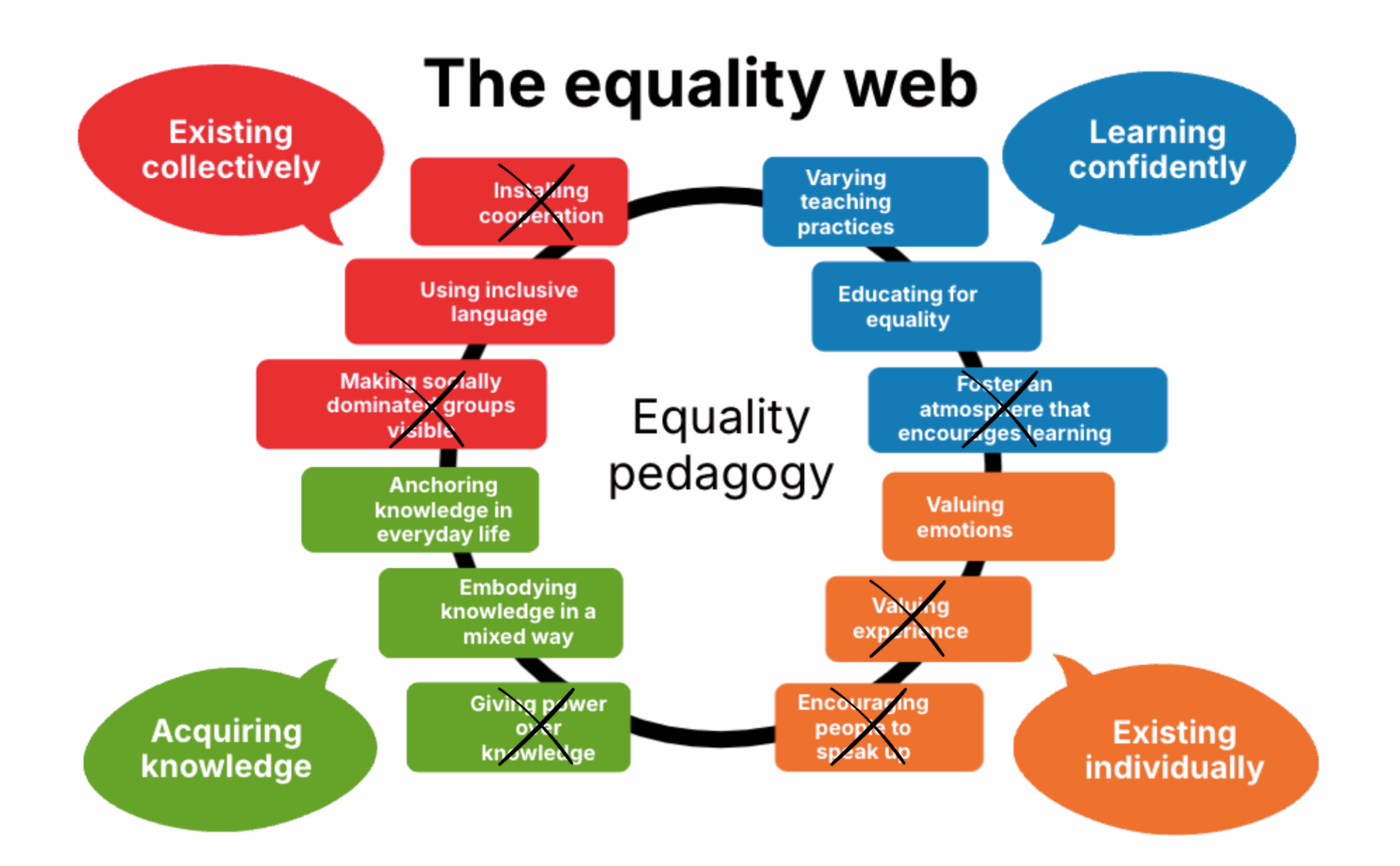
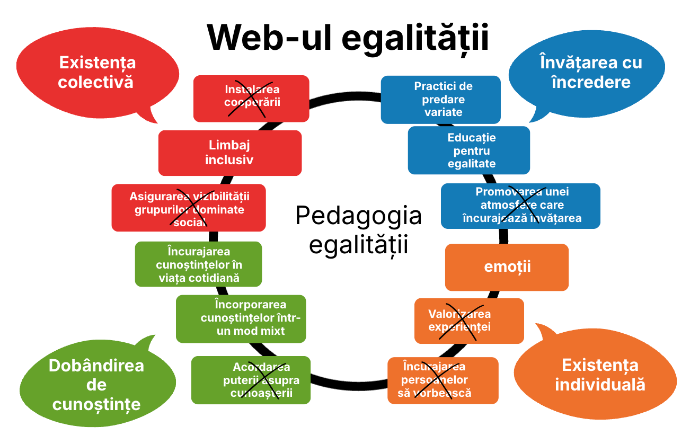
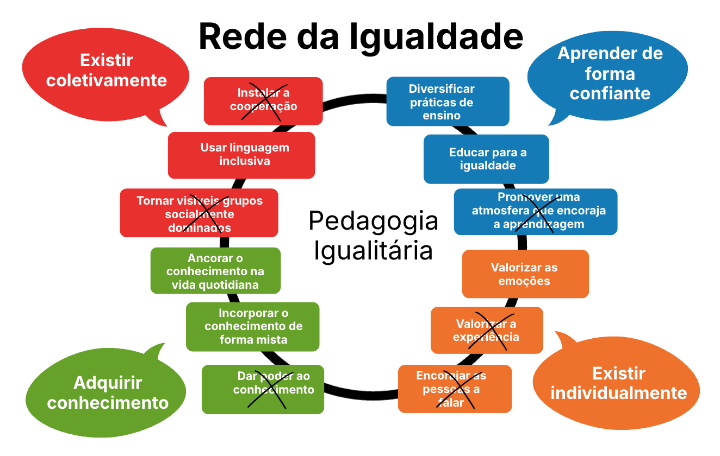
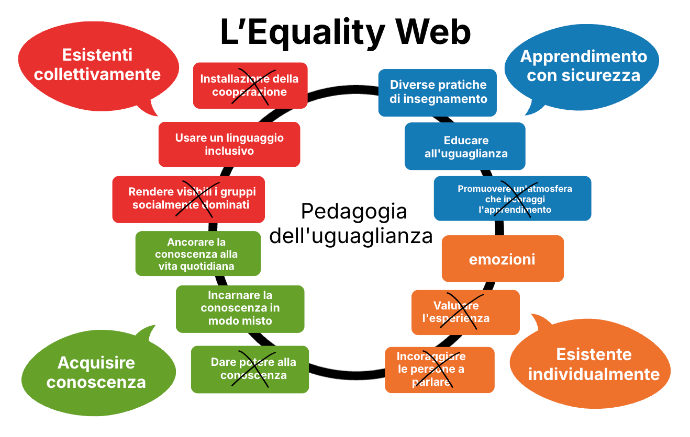
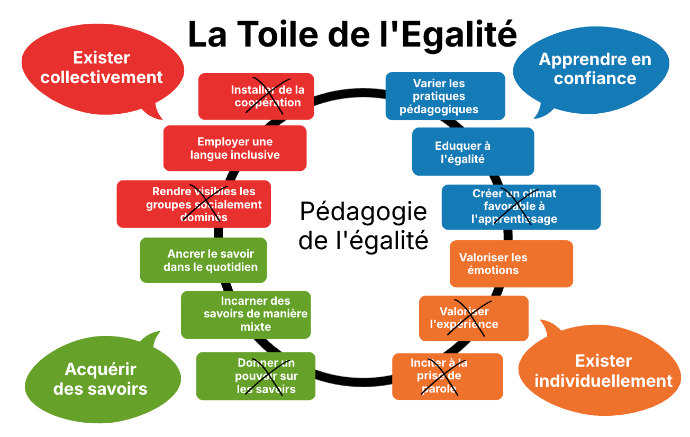
In short, the teacher described the activity by focusing on the acquisition of technical skills, without taking into account social dynamics and potential inequalities of participation and experience. Obviously, the teacher had no intention of creating inequalities. She was simply unaware of these dynamics, as she assumed that differences between girls and boys were natural. The equality web helps to shed light on unconscious biases and encourage critical reflection on teaching practices.
How to make this activity more inclusive?
Fostering an atmosphere that encourages learning
- Ensure the robot choices are not gender-coded by offering a range of neutral robots.
- Normalize diversity in interests: Acknowledge and celebrate that students may have different interests
Installing cooperation
- Encourage mixed-gender groups: intentionally form mixed-gender groups to promote equal collaboration between boys and girls.
- Rotate roles within the groups so that all students engage with different aspects of the activity.
Making everyone visible
- Value all types of contributions: ensure that both technical and non-technical tasks are given equal recognition.
- Give equal speaking opportunities.
Valuing experience
- Recognize diverse experiences: ask pupils about their previous knowledge or interests in technology and robotics at the start of the activity. Use this information to tailor the activity, making sure it is inclusive of everyone prior experiences.
Giving power over knowledge
- From Users to Authors: Let pupils imagine and design their own robots before programming — choosing its look, name, and purpose. By telling its story, programming becomes a way to express ideas, not just follow instructions. When learners have a say in what they create, they become authors, not just users.
- Decenter the authority of the teacher: Encourage peer teaching and rotate expert roles and celebrate mistakes and show them as part of the learning process.
Can you think of other ways we could make this activity even more inclusive for everyone?
There are no comments for now.
